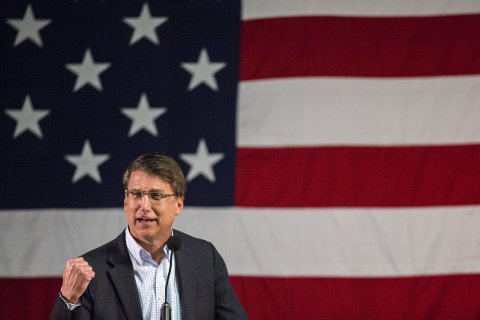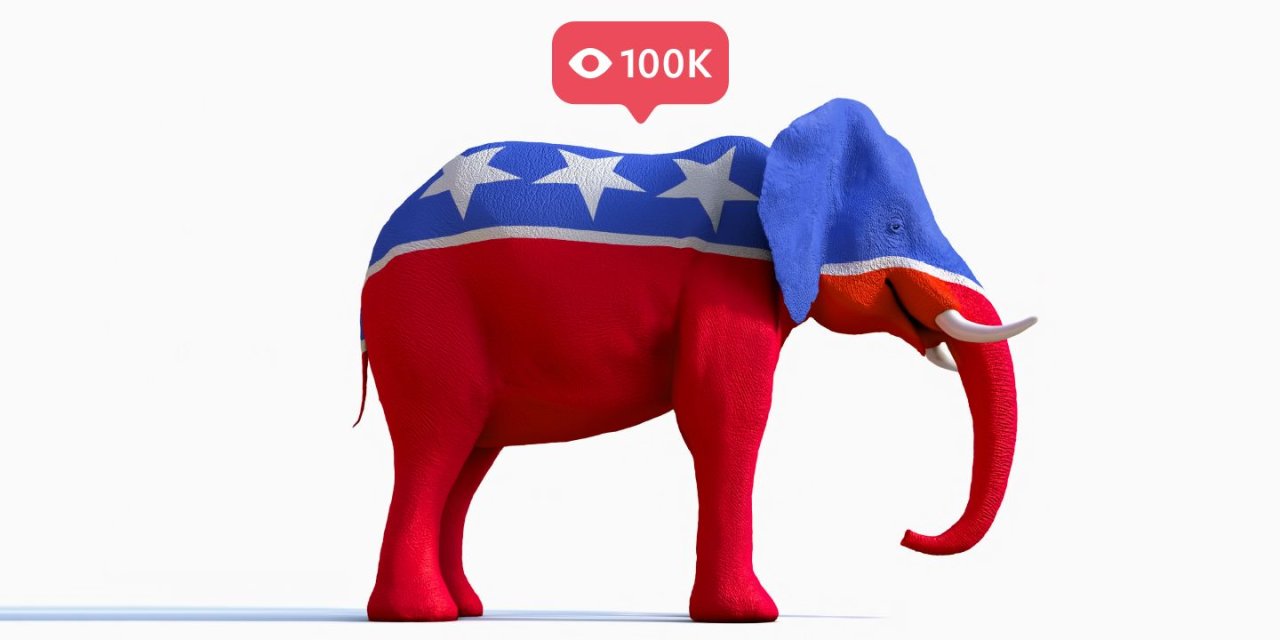About a five-minute drive from downtown Morehead City, North Carolina, three retirees sat down for lunch at their favorite spot, Bojangles' Famous Chicken 'n Biscuits. While visitors to Morehead City, on the southeast coast of the state, might feel they had tumbled into a world far removed from the rest of the state, one of the men, a retired nuclear chemist, said he knew of a place that was much more out of touch.
"One of the most isolated places in the world, and I've been there, is a university," said Ken. "All you do is talk to your friends, and your friends are the same ones who think the same way you do…. They only talk to people who make themselves feel comfortable."
Ken was sitting with Verne and Bob. The three retirees and friends also happened to be leaders of the Crystal Coast Tea Party Patriots (CCTPP).
"Sounds like D.C.," Verne quipped.
"In a bubble," added Bob.
"You always hear on the news that Congress is out of touch," Ken continued. "They never go home and talk to their people."
Ken had worked for the federal government for 30 years in both the military and the Department of Energy. "As a scientist, I believe you got to look at both sides to make an intelligent decision. If you want to make stupid decisions, that's easy," he added. "But if you want to make informed decisions, you have to read 'what this side says and what this other side says.' You have to also seek what the facts are and not what the feelings are."
This viewpoint, the three men agreed, drove their digital work.
As the person responsible for promoting the group's lively Facebook page and Twitter feed, Ken worked tirelessly to distribute information. While he wrote posts himself, many were retweets or links to stories from news outlets such as the Carolina Journal , a statewide conservative newspaper run by North Carolina's John Locke Foundation, or Breitbart News, a national right-wing news outlet.
I was interested in learning more from activists like Ken, Verne and Bob since I had noticed their active online presence. They seemed to defy the prototype of the digital activist. Most of the early hype around digital activism focused on protest movements of the left. Right-leaning movements' digital activity was given little attention in the media, even dubbed "astroturf." And even after the election of Donald Trump in 2016, a common assumption was that conservatives had been duped by fake news or Russian hackers.
A few years earlier, though, I was finding a broad spectrum of active right-wing online activity. Some was sensationalized, but much was measured and analytical. I was curious how the CCTPP's political ideology might factor into what its members did online. I had already found that social class and organizational structure shaped online activism. Both of these capacity factors had challenged the pluralist view of the internet—not every type of social movement group is online at equal rates. But were right-wing and left-wing groups using digital technology equally?
Ken's statement about academia and left-leaning politics was right in some ways. Scholars tend to lean further left. Most research on social movements generally focuses on progressive causes. Some had researched underground far-right groups' internet activity, especially online discussion forums, and since then, a handful of studies have emerged comparing left and right populist movements online. But the vast majority of digital activist research has focused on left-wing movements.
As a result, the exact role of political ideology within digital activism has been a puzzle that has produced three general arguments. First, many have connected digital activity with left-wing protest movements, such as Occupy Wall Street, both because of egalitarian associations with internet use and because, simply, these types of movements are usually the object of study. The second line of thinking is that ideology is less relevant with digital activism because online participation comes from individual experiences rather than organizational dogma.
The third argument is that, well, it depends. Political ideology's role in digital activism hinges on the broader context—when a group is the "out-party," it uses it more. A possible fourth argument—that conservatives dominate digital spaces—was not yet on the radar. Trump and the debate about the influence of even more sophisticated tools like bots and clickbait would come later.
So where do right-wing groups fit into these arguments? Studying the relationship between digital activism and the politics surrounding collective bargaining rights for public employees in North Carolina was a way to cast a wide net to include, hopefully, a wide range of groups on all sides of the debate. Indeed, these components in the South generated a broad political spectrum of groups organizing around this issue, from the far left to the far right and those in between. But it was this very ideological divide that helped explain why Ken and his friends with the CCTPP were some of the most prolific users of digital technology.
The CCTPP's high level use of the internet was common among conservatives. The top five groups in the digital activist index were right wing. Conservatives had more complex and updated websites, as well as a higher number of Facebook comments and tweets per day, than progressive groups did. Eighty-two percent of right-wing organizations had Twitter accounts, compared with 65 percent of left-wing groups, boasting a greater number of tweets, Twitter mentions and a higher overall Twitter score. In general, they were more likely to set up online platforms and update them regularly.
Conservatives dominate the digital activism score even more when we throw in the additional factor of a group's political strategy—whether a group is reformist or radical. The gap widens considerably between reformist right-wing groups at high digital levels over radical left-wing groups' low levels.
It's clear that most right-wing groups in my study were using the internet more than left-wing groups. Can this be explained by only one of the three factors I examine: class, organization or ideology? The answer, of course, is no. Instead, what I began to see is that several of these factors, when combined, would amplify the effect of the others. These factors build on each other and further widen the digital activism gap.
I also found that the common view of left-wing horizontal groups as being associated with internet use did not fit the mold. It was the opposite. Right-wing groups that were hierarchical in their decision-making structure were the top users of the internet. This embrace of digital media by right-wing groups seemed to go almost wholly unnoticed outside of their immediate circles at the time. The popular perception of internet use, fed by the media's focus on the use of technology by left-wing protest movements, had people looking in one direction while a wave was cresting from just outside this field of vision.
Interestingly, it was not just outsiders who were mesmerized by the left's digital media use. Right-wing activists themselves were not always aware of the extent of their conservative digital ecosystem. A well-organized and resourced digital movement on the right had been growing in North Carolina. Grass-roots conservative groups had received some attention because of the elections in 2010, but they were generally not on the digital activism radar of most pundits or the liberal public. While tea parties were the focus of the far-right grass-roots conservative movement, that was not the whole story in North Carolina. Tea parties were just the tip of a vast conservative iceberg. The depth and breadth of this digital juggernaut would not become popularly acknowledged until well after statewide elections in 2012 that sent the state careening even further to the right than it had been in decades.

Those North Carolina elections delivered a devastating blow not just to Democrats but to anyone who had been fighting in some corner of the state for public workers. Republicans won a stunning, historic victory, gaining complete control over state government for the first time in the post–Civil War era.
Nationally, North Carolina's legislature would gain attention in the coming years for bills such as the one to ban transgender bathrooms and attempts to declare a state religion. But these were just highlights among an endless rightward march to curtail abortion, pass rules to limit ballot access and gerrymander voting districts to maintain power. The gerrymandering was so radical that the U.S. Supreme Court would later declare it illegal. The state's agenda moved so far to the right that even then–Governor McCrory would veto six bills passed by his own party. At least four vetoes were overridden.

Years later, this robust, tightly linked network would evolve into the fertile terrain that would stimulate the spreading of the information, "the Truth," the messages that would all propel Trump's campaign. But while many saw this as a phenomenon that seemed to come out of nowhere in 2016, in reality it was under construction for years. One could see it forming close to the ground in North Carolina a few years earlier. And so rather than being an anomaly, the state was a bellwether for the tidal shifts what would shock the nation a few years later.
For those finding themselves on the wrong side of the digital activism gap, it's critical to fully understand the factors that created it. Not only did conservatives dominate in the digital domain thanks to a focused message of freedom rather than a fractured one of fairness, but reformist right-leaning groups working within the legislative system also had much higher digital participation than their radical left counterparts did.
Excerpt adapted from The Revolution That Wasn't: How Digital Activism Favors Conservatives by Jen Schradie, published by Harvard University Press. Copyright © 2019 by the President and Fellows of Harvard College. Used by permission. All rights reserved.












